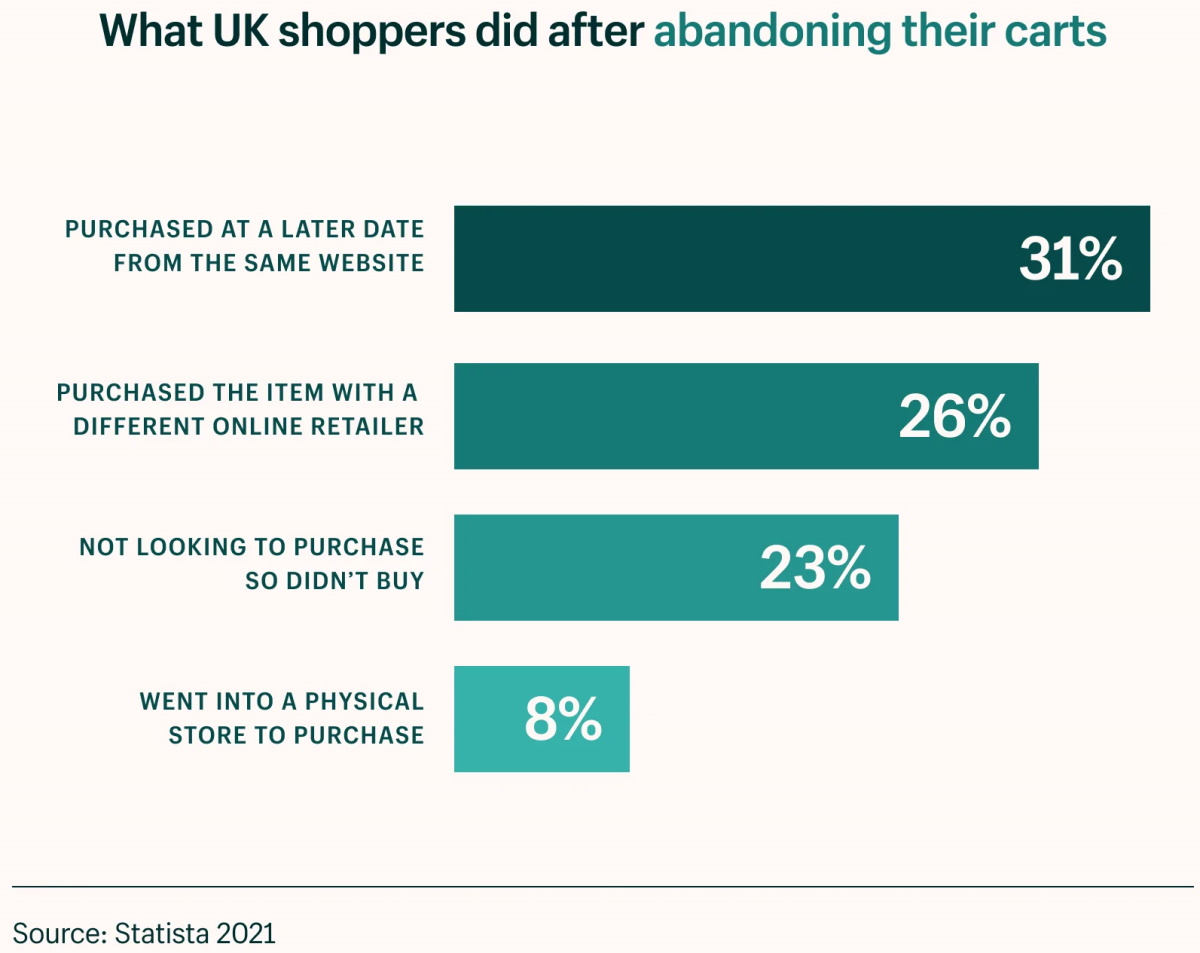It’s all about Page Speed – and if you ain’t fast you’re just frustrating.
We have been helping retailers tackle this continual challenge for a long time, and here’s the low down on how to ensure you’re getting it right.
By 2022, e-retail revenues are expected to grow to $6.54 trillion, up from $3.53 trillion in 2019. And there are no signs of this growth slowing down. As the public becomes more accustomed to shopping from home, thanks to the cultural shifts brought on by COVID-19, we can expect to see changes in what they expect from the eCommerce buying experience.
Some Warning Signs we see retailers are facing:
- Basket abandonment – ‘unexpected costs’ are responsible for 56% of all cart abandonment. It is a % worth pausing on. Or was it the slow site?
- Site hits – you’re getting hits but lack of further engagement – this hints at frustrated buyers – check.
- Page engagement times are short - users could be closing the page down before it loads – check.
- Increased Bounce Rates: A slow loading page triggers the users to bounce back.
- Reduced Organic Reach: It is hard for your site to rank if it is taking ages to load.
Current Market & Best Practice
Retailers we work with measure the key metrics that impact their bottom line every day and strive to ensure that the ideal customer journey is satisfying and certainly a frustration-free experience.
Just a one-second delay in loading time results in:
- 16% decrease in customer satisfaction
- 11% fewer page views
- 7% loss in conversions
- The ideal website load time for mobile sites is 1-2 seconds
- 53% of mobile site visits are abandoned if pages take longer than 3 seconds to load
- A 2-second delay in load time resulted in abandonment rates of up to 87%
Four Top Techniques
Business Management author Peter Drucker. Once famously said:
“If you can't measure it, you can't improve it.” and that holds very true for page speed. It sounds an obvious place to start but do you even know what you’re up against?
Free checks are a great place to start and there are tons of tools out there. All differ slightly in their approach but essentially give you a line in the sand. One of the easiest places to begin is in Google itself. Hit up https://web.dev/measure/, enter a URL like your home page or a PDP and click RUN AUDIT. Bingo, your first speed metric!
…then create a plan to iterate regularly through the rest
Your initial page speed measure will give you a feel for how good (or bad) your client page speed experience is. Of course, you’ll need to monitor more than a one-off, across more pages and at different times of day (see below) but the first step.
Easy wins include:
Run Compression Audits & reduce the size of all images
Gzip compression can reduce response sizes by 70%.
Enable Browser Caching
With caching enabled your website speed will be faster for returning visitors as they’ve already downloaded the images, style sheets and JavaScript they need. External Content Delivery Network (CDN) are also a common solution.
Optimize Website Speed
HTTP requests are made for each element on your website. I’m again referring to things like images, scripts, and stylesheets. Question your webpage designs, understand individual element load times and sizes and reduce unnecessary clutter.
Reduce the Time to First Byte (TTFB)
Slow TTFB means your customer is ‘hanging’ waiting for a request to process on your server-side – speeding up networks and backend systems as well as redesigning the flow of requests needed to build a page can all help.
Watch out for Third Party Addins
The performance limitations of integrated third-party addins are often out of your control – choose them carefully, monitor their impact, remove any you no longer need and consider alternatives to the slow ones.
Google say you should be aiming for the green….which is fine but in reality modern retail systems are complex dynamic beasts and many elements in your design will simply put a green out of your reach. You should always aim for the best score but don’t chase it for the sake of the number.
- Monitor regularly, over time, and against your competitors.
- Encourage developers to use built-in tools to Google Chrome, to run checks like web/dev/measure.
- Create an ongoing monitoring approach to build up a data profile and build up a benchmark.
- Watch how differences in page speed impact conversion or abandonment.
- Remember the mobile! The value of browsing and ordering across your mobile and desktop customers and factor that in when selecting what to improve.
So is it all about speed?
Knowing that shoppers require speed is all very well but more than that they want more content. For example, I’m afraid customers want to see at least 3 images of an item when purchasing, which means retailers need to bulk up their platforms to make way for more.
Keep innovating - but keep on top of speed!
Page speed is only one part of this positive experience. Some of our leading customers release multiple versions of their site to test different user groups and monitor the impact on user behaviour in real-time. Aim to match what they’re doing – let your customers lead and then work out how you can do this at speed – simply because this will always be the expectation.
Honestly, there is no rocket science behind the fact that improved loading speed can increase sales. The logic is simple: people love swiftly loading sites and so does Google. In 2022, if you are an eCommerce business owner, your website speed should be the first thing you should review to step towards success.
But yes, sadly creating a fast website isn’t just a matter of installing a few plugins, and walking away and saying ‘Jobs a good un!’ It’s a continuous process that involves regular testing, tweaking, and housekeeping to keep your webpage speeds high.
The importance of website speed can’t be overstated, but it is also not complicated so address it and master it. Easy! When you know page loading times can make or break the success of your site, yes, it’s a pretty easy decision.
To find out more about Spike and the services they provide to the retail industry, click here.
This article was also published in The Retailer, our quarterly online magazine providing thought-leading insights from BRC experts and Associate Members.

